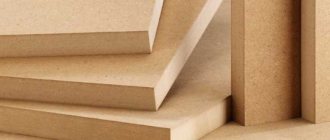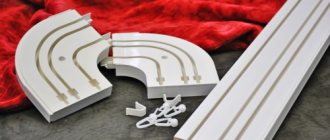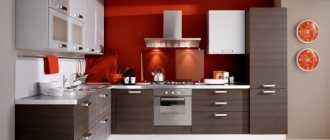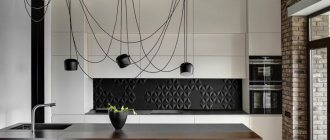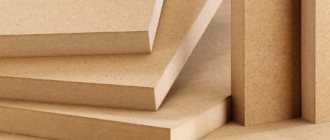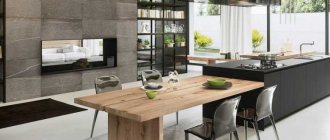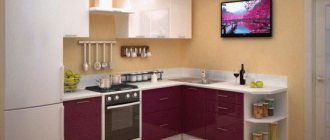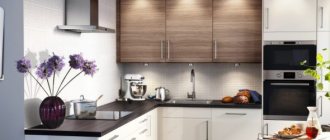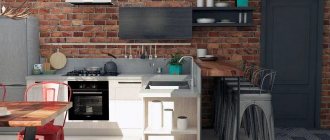When you are faced with the choice of furniture for the kitchen, you need to approach it as seriously as possible. Kitchen with a ceiling or standard cabinets with a lower height? How to combine design, comfort and functionality into one solution?
Remember: correctly selected furniture is the heart of the interior, the most functional and spacious touch in your everyday life.
I would like to note that the masses of mournful specialists are categorically against kitchens with high cabinets, especially in small spaces. They explain this by the fact that tall furniture puts pressure on the owner.
However, in fact, a small or large area does not play a big role in the final decision - it all depends on your needs, because you will then have to create culinary masterpieces, communicate with family, or just sit with a book in this room. We will tell you in our article how to combine functionality and design into a single whole, what are the advantages and disadvantages of ceiling-mounted cabinets.
Advantages of tall cabinets
When you are a thrifty housewife/host, you can never run out of storage space. In this case, furniture under the ceiling is the ideal solution, where every corner is involved in the work.
If small, non-functional cabinets collect dust and dirt on their surface, then these problems do not exist in tall cabinets, and all the little things are inaccessible to prying eyes.
The issue of free space deserves special attention. When using tall cabinets, it is not wasted, and even a small kitchen will appear larger and the ceilings will appear higher. You can also save on wall decoration - the furniture will completely cover them.
In the absence of a pantry, deep cabinets located under the ceiling - mezzanines - will help in storing canned food for the winter, seasonal items, and various household equipment.
Tall cabinets are also convenient for built-in appliances, such as an oven or microwave oven, which significantly saves free space in an apartment or house.
Advantages and disadvantages of a kitchen up to the ceiling
In most kitchens, wall cabinets do not reach the ceiling, leaving some space above them that is not used in any way and is simply covered with dust and grease, requiring periodic cleaning with painful scrubbing. This arrangement can be called classic; no one thinks that this space can be used and exploited profitably. There are often objective reasons for this, including:
- the considerable cost of facades, which increases in proportion to the increase in their area;
- a special configuration of the ceiling itself, as well as communication systems, making it difficult to install cabinets at the required height;
- finally, there is a banal inconvenience when working with blocks at such a height - few people are tall enough to easily study their contents and, moreover, use them.
However, these shortcomings are conditional and do not stop many. For the sake of a beautiful kitchen, you can make one-time additional expenses, make custom-made drawers that take into account the laid communications and the profile of the ceiling, and install a ladder in the kitchen that will allow you to easily work with the upper tier of the set.
Kitchens that go up to the ceiling have a lot of advantages that more than offset their disadvantages.
- First of all, the housewife has the opportunity to place in the upper drawers much more kitchen utensils and other things that do not fit into the drawers intended for them in other rooms. They will serve as mezzanines or storage rooms in which you can store even seasonal supplies (inflatable mattresses, skates), rarely used household appliances, pickles, preserves, various packaged foods, etc.
- The next advantage of cabinets up to the ceiling is that with their help you can save on wall finishing, since such a set will be a false wall. You no longer have to figure out what color to paint the wall or what wallpaper to cover it with - well-chosen cabinets eliminate this need.
- The most pleasant thing about arranging kitchens with cabinets up to the ceiling is that they create a unique aspect of the design of both the kitchen itself and the entire home.
- A kitchen set of this type can easily be used in a corner kitchen.
Finally, it should be mentioned that a kitchen up to the ceiling can easily fit into almost any style, both modern and traditional, even as conservative as Provence. Often, upper cabinets are disguised with decorative panels or even wallpaper; other finishing options are possible - the list of such finds in the design of a kitchen set is varied and arouses interest at first sight.
Disadvantages of tall cabinets
Tall cabinets also have their downsides. For example, the housewife’s short stature will not allow her to reach the desired shelf. The solution to this problem is a small stepladder or chair, or an alternative is to place rarely used items on the top shelves so that you don’t have to reach for them often.
In fact, this drawback is hardly worth considering as significant. If the owner is short, some kind of footrest will probably help him reach the top shelves and ordinary standard cabinets. And if you still have to install it, then this minus of high furniture does not play a big role.
Material for haute cuisine
It is known that correctly selected and positioned tall furniture makes the walls visually taller, thereby visually expanding the space. If the area is small, you can give preference to glossy surfaces in light colors: white, gray, cream. Gloss reflects light, expanding the space.
Glossy set reflects light Source akcent-mebel.com
In a large kitchen, the same glossy cabinets will look good, but in a dark color, even black. Or, conversely, bright: red, orange, yellow. But olive and rich gray look very noble.
Kitchen in olive color Source www.mrdoors.ru
To add zest, they play with contrast, making the lower tier in one color, and the upper in the opposite color. Moreover, it is a matter of taste whether to adhere to the principle “black bottom white top” or act in the opposite direction.
One of the disadvantages of using gloss is that it requires daily care. Fingerprints, stains, and stains easily remain on shiny surfaces. If the owners are not ready to thoroughly rub the surfaces and keep them clean, it is better to abandon this material.
If you like home comfort, give preference to a solid wood kitchen. The material will even allow you to get carved facades, and the texture will fill the kitchen with a special atmosphere.
Haute kitchen made of solid wood Source mebelindesign.ru
See also: Catalog of companies that specialize in roofing materials and lighting
At the top, under the ceiling, balconies are appropriate, on which you can display potted plants or collections of mugs, bottles, and souvenir plates. In cases where solid wood is unaffordable, materials similar in texture are chosen. They are modern, cheaper and of good quality. Where to stop is a matter of taste.
Let's look at the most popular materials for kitchens:
- Furniture board. Made from pieces of natural wood. Environmentally friendly, but subject to external changes and cracks.
- MDF. Resistant to external influences, but not breathable.
- Plywood. Strong, can be given any shape, can be processed, and lasts a long time.
- Chipboard. Often panels are made by lamination or spraying. A strong material, but if done poorly it can be loose.
Types of facades
Decorating kitchen furniture is a significant moment, because the mood in the room depends on the atmosphere: both working and relaxing. By all rules, a designed set is a unity of style and ergonomics.
If the cabinets are equipped with hinged doors, replacing door hinges that provide a larger opening angle will help improve their functionality - this way you will protect yourself from constantly opening the doors while cooking, protect yourself from hitting the facade and get more free space. This option is convenient in corner kitchens.
Lately, cabinets with lifting fronts have become increasingly popular - when opened, the door either rises completely to the top or partially folds. If desired, such a facade can be installed instead of hinged doors - this will be a wonderful solution, especially if there are large compartments. Although this pleasure is more expensive, they are the most convenient to use.
Deciding on handles
Increasingly, models of facades without protruding handles are being installed on tall cabinets, replacing them with more modern options.
The most convenient and safest solution can rightfully be considered facades with hidden mechanisms that allow you to open any door with one touch of your elbow, hand, shoulder, etc. This is especially true in the kitchen, for example during cooking or cleaning, when your hands are busy. Such mechanisms have a number of advantages:
- silent opening;
- the absence of protruding handles and smooth closing using closers minimizes the risk of injury;
- the kitchen becomes visually more spacious and lighter.
Perhaps you decide that the furniture will quickly become dirty from constant touching? Perhaps, but no more than ordinary pens. With all this, it will be much easier to clean the facade; fortunately, there are now a lot of different detergents and cleaning products that, even with prolonged use, do not damage the surfaces of the furniture.
If you are not ready to completely give up handles, use elements that match the furniture or are made of a similar material. This way they will blend into the surface without spoiling the look and making the kitchen more perfect and modern.
If you still want to feel at least some semblance of handles, but the prospect of banging various parts of the body against them is not appealing, use some semblance of them - recesses along the edges of the facades . They can be called handles, but they do not protrude outwards, but into the inside of the door. This solution will at the same time allow you not to give up old habits, and will make the kitchen more attractive.
Types of cabinets in kitchens up to the ceiling
In kitchens where cabinets reach right up to the ceiling, there is a wide range of options for arranging the doors; fortunately, the variety of styles in which they can be used allows this to be done. In these kitchens you can see:
- Standard swing doors that everyone has been accustomed to for a long time. The traditional solution makes it possible to comfortably use lockers of any block size. If the need arises, the doors can easily be equipped with special hinges that can significantly increase the opening angle. As a rule, this is needed in corner kitchens.
- Lifting facades. They are installed if the size of the compartment is large and there is a possibility of hitting the open sash. This scheme involves opening the sash upwards, while it can be folded or opened entirely. Technically, this solution is implemented using elevator lifts, gas shock absorbers and other special mechanisms. Of course, this increases the cost of the cabinet.
- Fronts without handles. The absence of handles on kitchen facades up to the ceiling is possible using mechanical systems, electric drives, using elongated facades, metal profiles, etc.
Whatever option is used, the designer takes into account its relevance in the specific style of the room.
How to make a choice
Three types of facades are used for wall cabinets:
- blind - suitable for kitchens made in those styles where a smooth, flat surface is the leading element. Such facades have no joints or gaps and are made of various types of wood (acacia, pine, oak, alder, oak, beech), chipboard, MDF (wrapped in plastic or PVC film, veneered with natural stone or painted);
- glazed ones always look good, give the interior elegance and sophistication, they can be combined with elements from other materials. Glass can be frosted or transparent, colored or engraved. The big advantage is practicality and ease of maintenance.
- open - the shelves themselves. It is easy to get the necessary item, but it is worth considering that all kitchen utensils are in plain sight and covered with dust.
Tall cabinets can be:
- Open.
- Closed.
- Combined.
The combined option, in contrast to a completely closed or open one, allows you to simultaneously hide the little things of everyday use behind the doors, while at the same time display your favorite things on open shelves or make frequently used items easily accessible.
What types of designs does a wall cabinet typically provide? These are shelves, a stand for dishes, containers for containers and doors, and pull-out baskets. You yourself choose the contents for your closet, but it is worth noting that it is not practical to install complex systems in wall cabinets; it is better to do this on the lower floors.
If shelves are a mandatory component, then not all cabinets have a dish rack. You can order it immediately with furniture, or you can, in principle, buy it later - there are a lot of different models that will suit you.
The container for containers can be located between columns or near the cabinet. It is increasingly appearing in modern headsets, it is convenient and practical: by pulling it out, you can easily get the necessary item, since the contents are completely visible.
Fold containers are indispensable for the housewife and are very convenient for storing a variety of jars and bags. Such devices are lightweight and allow you to keep spices, salt and pepper shakers fully sorted.
Pull-out baskets are relevant for both corner kitchens and columnar cabinets. The catch remains that it is difficult to get the necessary thing from the upper basket, but you can again use a sliding stepladder and store rarely used items on the upper tier.
By the way, today you won’t surprise anyone with cabinets near the wall. If space allows, you can experiment and install them, for example, in the center of the kitchen, thus dividing the room into working and dining areas.
This solution will be stylish and modern, and will also provide some advantage: furniture that is located away from the work area looks much cleaner and tidier, needs less cleaning, and, accordingly, its service life increases.
How to choose a cabinet for the ceiling - features and selection criteria
Kitchen furniture is furniture items that are purchased for many years, which is why it is important to choose an option that will fit perfectly into the interior.
Facades with hidden mechanisms can rightfully be considered the most convenient and safest solution.
Requirements that are put forward when choosing a kitchen set for the ceiling:
- resistance to temperature changes;
- moisture resistance;
- resistance to mechanical damage.
Narrow retractable shelves are often complemented with special containers for containers.
When choosing, you need to pay special attention to the material from which it is made. The method of opening the doors, the internal filling of the cabinets and the appearance also play an important role.
Corner kitchens use pull-out baskets or drawers. But they can also be found in column cabinets.
Installation of wall cabinets
There is nothing complicated in installing such cabinets; installation is carried out in a standard way:
- we assemble the set itself according to the manufacturer’s instructions;
- we drill holes in the wall, hammer in dowels, and cut self-tapping screws into them;
- fasten the back wall of the cabinet box to the hinges;
- we hang the facades.
Cabinets can be hung not only on hinges. A more reliable option is installation on a metal rail, when the fasteners are attached to the box itself, and then cling to the wall to a fixed profile (see photo)
If there are uneven walls, ceilings or floors, installation difficulties may occur. First of all, these are gaps that can form between the ceiling and the cabinet, so before installation you need to carefully measure and think through everything in order to avoid annoying mistakes.
By the way, in the case of an uneven ceiling, the desire to install high cabinets can be saved by a stretch fabric, which will hide all the imperfections and level the surface of the ceiling.
You can watch the installation of a corner kitchen under the ceiling in the video:
KITCHEN INSTALLATION. Kitchen-living room with ceiling. Corner kitchen white mat. Acrylic table top. Kitchens Kyiv.
Ventilation
It often and very often happens that when installing ventilation, builders make gross mistakes, which then negatively affect the health of the customer.
How not to do it, but 90% do it:
The hood box is connected to a round pipe and walled up in the channel leading to the ventilation shaft. And since a check valve is installed on the hood, there is basically no air exchange when the hood is turned off. A channel with a diameter of 100 mm is often used, but such a cross-sectional area simply does not allow the kitchen to be ventilated.
Most apartments and private houses today are equipped with gas stoves, which during operation emit large amounts of carbon dioxide and carbon monoxide. Carbon monoxide is difficult to detect - it has neither color nor odor. An open window is powerless - there is practically no air convection when the hood is not working. What to do in this case?
The first step for ventilation is to enlarge the hole for the rectangular cover. We will need two channels: we will connect the hood to one of them, the second will serve as ventilation when the hood is turned off.
The air exchange in the kitchen must exceed 100 m3/h, so a 12.5 cm air duct must be used for the hood. Thus, the treated air will be removed up to 350 m3/h.
You will feel the results of proper ventilation immediately:
- feeling comfortable in the kitchen
- lack of stuffiness
- the operating hood is much quieter
First of all, the kitchen should be safe, and only then beautiful and functional. If in a room with standard cabinets the ventilation hole is accessible and located above them, then in a kitchen under the ceiling the ventilation scheme should be thought out in advance.
How to hide pipes in the kitchen
The pipes that are inevitably present in the kitchen clearly do not decorate it: sewer, water, gas, and heating pipelines are and will be - this is a necessity. However, to visually hide them or at least reduce their number, you can use the following techniques.
Water and sewer
- Decorate with special sleeves.
- Place the pipes in a box under the sink - this way you will hide communications from prying eyes and, if necessary, provide free access to them.
There is also a hidden method when pipes are laid in special channels (grooves) in the walls. However, for this type of structure this is not the best option - they are more likely than others to leak, and to fix them you will have to break the wall.
If you really want to, use permanent connections, this will reduce the risk of leakage. For sewer pipes, the grooves are needed wider and deeper.
It is permissible to lay only new pipes in the grooves. In plastic structures for hot water, compensators must be provided that are responsible for the thermal expansion of the pipes.
Radiator
- Various colors.
- A plastic or wooden cabinet installed end-to-end to the window sill. However, it is worth remembering that wood absorbs moisture, and due to evaporation it often becomes deformed and cracks.
- Special screen for heating with a lattice structure (metal, plastic). The grille does not retain heat and distributes it freely throughout the room.
Heating system pipes
Most often they are laid in the floor using a hidden method. In a wooden floor - between the bars, in a concrete floor - between the screeds immediately before pouring. To prevent heat from dissipating through the concrete, the pipes are insulated with a heat insulator. Special linings mask the exit point of the pipeline.
Gas pipes
- Various decorations (from painting and sleeves to decoupage).
- Installation of special boxes (plasterboard, plywood, plastic, chipboard are used).
- Wiring inside the cabinet.
It is strictly forbidden to use a private method!
Ventilation pipes
When planning a kitchen with a ceiling, the ventilation system must be taken into account first. Otherwise, problems may arise, for example, the cabinets will be higher than the ventilation duct and simply close it.
- The gap between the ceiling and the cabinets can be closed with a cornice, and the pipe can be hidden there from the ventilation.
- Make cuts in the side walls of the furniture cabinets and place the pipe inside.
- Install a plasterboard box along the location of the ventilation duct and hide the pipe inside it.
If all of the above options do not suit you, and the appearance of various pipelines is annoying, you can resort to the method of painting, painting or decoupage.
Kitchen design and decoration
If your kitchen is designed in modern style , then cabinets up to the ceiling will fit perfectly into the interior. Using different combinations of kitchen fronts, you can visually expand the kitchen, raise the ceiling or combine styles. In a small room, it is better to use a set with a glossy finish - this way the furniture will be easier to perceive.
In a classic-style , cabinets styled like wood with glass fronts will look good. With high ceilings, additional lighting is often necessary.
As an option, make the upper compartments blank, imitating mezzanines, cover them with a cornice and install lighting elements (LED strip, LED lamp). This way the room is zoned, and the light is not scattered into unnecessary space.
Don’t forget about color - if for a large kitchen you can afford to choose a dark set, then for a small room it is better to use soft light colors. This is important - the right choice of color directly affects the visual perception of the kitchen.
The English or Provence kitchen style involves combined open shelves with glazed or blind compartments. If the upper part of the compartments consists of open shelves, you can style them with curtains - the best option for rustic interiors. For low ceilings, preference is given to entirely glazed facades or the top of cabinets - this allows you to visually expand the room and raise the ceiling.
Modern kitchens with ceilings combine horizontals and verticals, with the goal of changing the proportions of the room. Even kitchens with low ceilings deserve to have horizontal lines - an excessive number of verticals will narrow and lengthen the room . In a small kitchen, it is better to use open or glazed facades on the lower floor of a wall cabinet, and solid ones on the upper floor.
Types of designs
Designs can be of two types:
- Floor-standing with drawers up to the ceiling.
- Mounted.
To choose the appropriate option, you should familiarize yourself with these types in more detail.
Floor-standing
The floor type is similar to a column that occupies the entire space, from the floor to the ceiling. Designers build special pencil cases into appliances, which can be used as a place to store various items or install kitchen appliances. Even refrigerators are installed in such niches.
One of the most popular ceiling designs is a three-section floor cabinet that is installed up to the ceiling. The upper and lower parts are used for storing various items or products, and the middle parts are used for installing household appliances: oven, coffee maker, microwave oven.
Possible design dimensions:
- 210-240 cm - height;
- 45-60 cm - depth;
- 40, 50 and 80 cm - width.
Important! You need to select equipment depending on the size of the apartment. Therefore, you should first take measurements yourself or invite a specialist to do this.
Mounted
Wall-mounted models are located under the ceiling and are designed for various bulk products, tableware, spices and any small items. The set can consist of cabinets in several rows or single modules. Double-row cabinets increase storage space for kitchen utensils.
Dimensions of this cabinet:
- 90-120 cm - height;
- 30 cm - standard depth;
- 30-100 cm - width.
Tall cabinets in a small kitchen
Tall cabinets for a small kitchen couldn’t be more relevant - they allow you to increase the space, visually raise the ceiling, and at the same time have maximum capacity and functionality.
To ensure that the cabinets do not seem cluttered, it is necessary to choose the right color palette.
Use light colors, let them be unobtrusive. The glossy surface of the facades will reflect light, enlarging the room - as an option, you can also install a glass apron.
And if the color of the furniture is matched to the walls, then the set will literally hide behind the shade.
Try to minimize the amount of different decor, instead use additional lighting. Spotlights along the perimeter of the ceiling or LED strip focus attention on the illuminated areas.
Rising or sliding doors in the set and the absence of protruding handles will bring your kitchen to the ideal.
Maintain proportions
Kitchens up to the ceiling, no matter what style they are made in, occupy almost all the free space on the walls.
Haute kitchen covering an entire wall Source yandex.net
Accommodation options:
- Along one wall - linear.
- L-shaped - two walls are occupied.
- The U-shaped kitchen has cabinets along three walls.
In order to avoid getting a “well” effect, especially possible in a small space, it is important to think about the design of the ceiling. A light shade will relieve the feeling of pressure, visually making the kitchen even higher and even wider.
Haute kitchen with light ceiling Source pinimg.com
See also: Catalog of projects of houses made of SIP panels with an attic
Facades with large patterns, horizontal and vertical stripes, will visually expand the space. Bright furniture will help to avoid disproportion and place emphasis where it is needed. Light cold tones seem to expand the space, while warm ones, on the contrary, narrow it. Therefore, for a small kitchen it is better to choose the first option, and if the space allows, you can play with warm shades.
